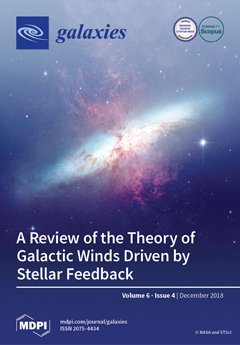Open AccessArticle
The Extraordinary Linear Polarisation Structure of the Southern Centaurus A Lobe Revealed by ASKAP
by
Craig S. Anderson, George Heald, Shane P. O’Sullivan, John D. Bunton, Ettore Carretti, Aaron P. Chippendale, Jordan D. Collier, Jamie S. Farnes, Bryan M. Gaensler, Lisa Harvey-Smith, Bärbel S. Koribalski, Tom L. Landecker, Emil Lenc, Naomi M. McClure-Griffiths, Daniel Mitchell, Lawrence Rudnick and Jennifer West
Cited by 8 | Viewed by 3254
Abstract
We present observations of linear polarisation in the southern radio lobe of Centaurus A, conducted during commissioning of the Australian Square Kilometre Array Pathfinder (ASKAP) telescope. We used 16 antennas to observe a 30 square degree region in a single 12-h pointing over
[...] Read more.
We present observations of linear polarisation in the southern radio lobe of Centaurus A, conducted during commissioning of the Australian Square Kilometre Array Pathfinder (ASKAP) telescope. We used 16 antennas to observe a 30 square degree region in a single 12-h pointing over a 240 MHz band centred on 913 MHz. Our observations achieve an angular resolution of
arcseconds (480 parsecs), a maximum recoverable angular scale of 30 arcminutes, and a full-band sensitivity of 85
Jy beam
. The resulting maps of polarisation and Faraday rotation are amongst the most detailed ever made for radio lobes, with order 10
resolution elements covering the source. We describe several as-yet unreported observational features of the lobe, including its detailed peak Faraday depth structure, and intricate networks of depolarised filaments. These results demonstrate the exciting capabilities of ASKAP for widefield radio polarimetry.
Full article
►▼
Show Figures





